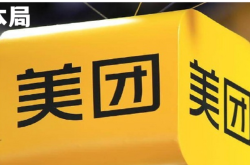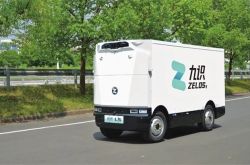Wang Yao: The Dual Impetus of Energy and Data Fuels the High-Quality Development of the Charging and Battery Swapping Industry | Editorial Insight
![]() 11/13 2025
11/13 2025
![]() 493
493
Author ︱ Wang Yao Layout ︱ Zheng Xueqin Design ︱ Guo Qing
This article serves as the 'Editorial Insight' in the November 2025 issue of Auto Review magazine.
The author holds the position of Secretary-General at the China Electric Vehicle Charging Infrastructure Promotion Alliance.
At a time when the energy revolution and the digital revolution are deeply intertwined, presenting a strategic opportunity, carbon reduction, the utilization of clean and alternative energy sources, and the unlocking of data's value have emerged as key drivers for China's new energy vehicle (NEV) development. This is crucial for achieving low-carbon transportation. Presently, China's NEV industry has successfully transitioned from a phase driven by policy incentives and industrial nurturing to one characterized by market-driven expansion. Throughout the NEV's growth journey, charging infrastructure has consistently maintained a forward-looking layout and construction pace. From 2016 to 2025, China's charging infrastructure has kept pace with NEV development. By the end of September 2025, the ratio of NEVs to charging infrastructure in China stood at 2.45:1. The charging infrastructure sector in China has provided a solid foundation for the large-scale promotion and application of NEVs, encompassing industrial scale, ecosystem, regional distribution, and model innovation.
To solidify the fundamental support for the widespread adoption of NEVs, China has constructed a relatively comprehensive ecosystem for charging and battery swapping services. From September 27-29, 2025, the Charging Alliance organized and hosted the '2025 China Automotive Charging and Battery Swapping Ecosystem Conference' along with the '10th Anniversary Achievement Exhibition' in Hefei. This event systematically summarized six key achievements in the industry's evolution:
1. Robust policy support. China has established a policy framework guided by central directives and implemented by local governments, essentially defining tailored approaches for various settings such as residential areas, highway service zones, public sectors, county and rural regions, and specialized sectors.
2. A well-developed standard system. China has formulated a relatively complete standard system for charging and battery swapping. Technologies like intelligent charging, high-power charging, integrated energy storage and charging, wireless charging, and V2G (Vehicle-to-Grid) are beginning to see widespread application.
3. Efficient data resource circulation. Leveraging the charging data interaction standard system and the automotive industry's trusted data space, multiple platforms have opened up data interconnection interfaces, dismantled data circulation barriers, achieved cross-operator data sharing, and fully harnessed the value of industrial data.
4. High-quality charging equipment. Charging piles have been incorporated into the 3C mandatory inspection system, with inspections and certifications commencing on March 1. This aims to enhance the quality of charging equipment, regulate competitive practices, and foster a positive correlation between product quality and pricing.
5. An intelligent operation and maintenance system. Utilizing AI + big data algorithms, precise operation and maintenance are enabled, reducing costs and boosting efficiency. Online operation and maintenance are conducted through intelligent charging service platforms to enhance charging operation and maintenance efficiency.
6. Encouragement of technological and model innovation. To facilitate the integration and interaction between NEVs and the power grid, the National Energy Administration issued the Notice on Promoting the Pilot Work for the Large-Scale Application of Vehicle-Grid Interaction (FG BNY [2024] No. 718). This mandates the comprehensive promotion of orderly charging for NEVs, the expansion of bidirectional charging and discharging (V2G) project scales, the enrichment of vehicle-grid interaction application scenarios, and the guidance of large-scale development of vehicle-grid interaction in line with the principles of 'innovation guidance and pilot first'. Recently, the Chinese government unveiled the first batch of cities and 30 pilot projects for the large-scale application of vehicle-grid interaction to explore sustainable business models.
Currently, the charging and battery swapping industry is at a pivotal juncture of rapid growth and high-quality upgrading and transformation. The Charging Alliance will stay true to its mission, guided by national authorities, unite industry enterprises, and resolutely advance the high-quality development of charging and battery swapping infrastructure.
1. Fully support the implementation and overall coordination of national policies, address deficiencies by scenario and region, and comprehensively enhance charging service guarantee capabilities.
2. Promote service quality enhancement, construct an open service platform for the China Charging Alliance based on the automotive industry's trusted data space led by the China Association of Automobile Manufacturers, build an integrated digital and intelligent service system driven by data, connected resources, and multi-faceted empowerment; collaborate with authoritative inspection and certification bodies to conduct quality grading evaluations of charging equipment, foster the establishment of an equipment quality ecosystem; continuously evaluate star-rated charging stations, create an open, transparent, high-quality, and efficient market environment; undertake work related to the professionalization of charging operation and maintenance management, and drive cost reduction and efficiency improvement for charging operation and maintenance enterprises.
3. Accelerate the promotion of technological and business model innovation. Deepen demonstration applications of cutting-edge technologies such as high-power fast charging, vehicle-grid interaction, and intelligent battery swapping, actively explore business model innovation, and propel the industry towards high-quality development.
4. Continuously expand international services. Establish a platform for exchange and cooperation for enterprises venturing abroad, support the overseas expansion of the charging industry, and promote the global dissemination of China's advanced experience, technologies, and models.
We eagerly anticipate industry stakeholders joining hands with the Charging Alliance to lay a solid foundation for development with a trusted data space, activate ecological vitality with an open service platform, jointly support government decision-making, serve industry development, and construct a high-quality development ecosystem for the charging and battery swapping industry.
Image: Auto Review
Article: Auto Review
Layout: Auto Review





